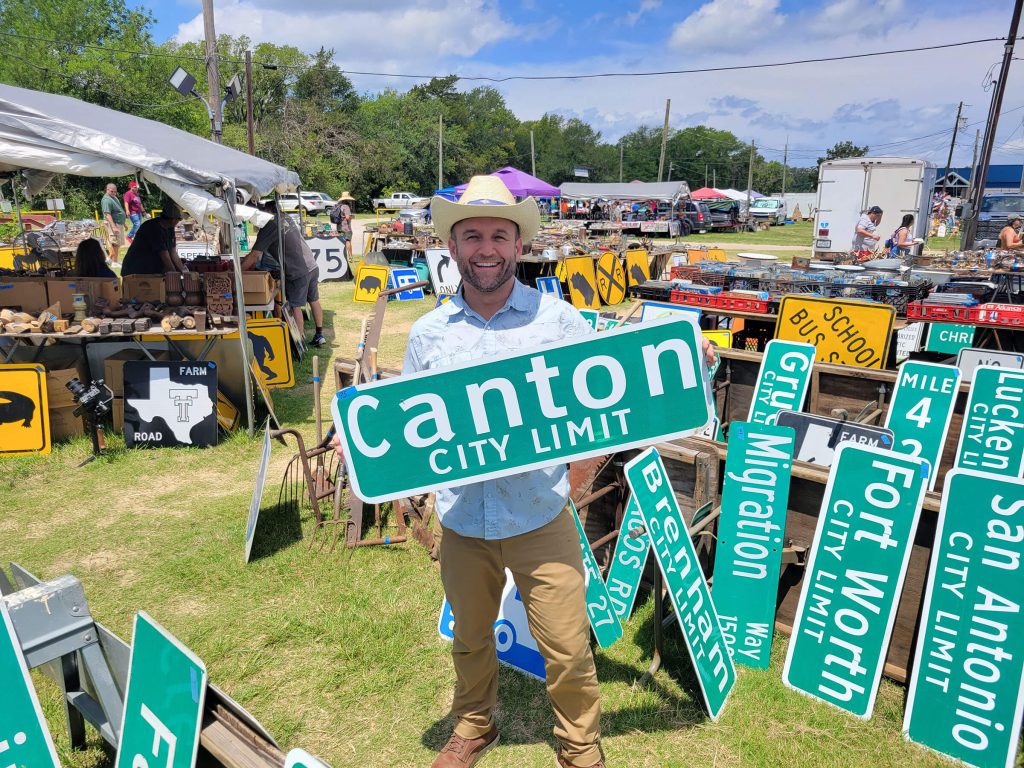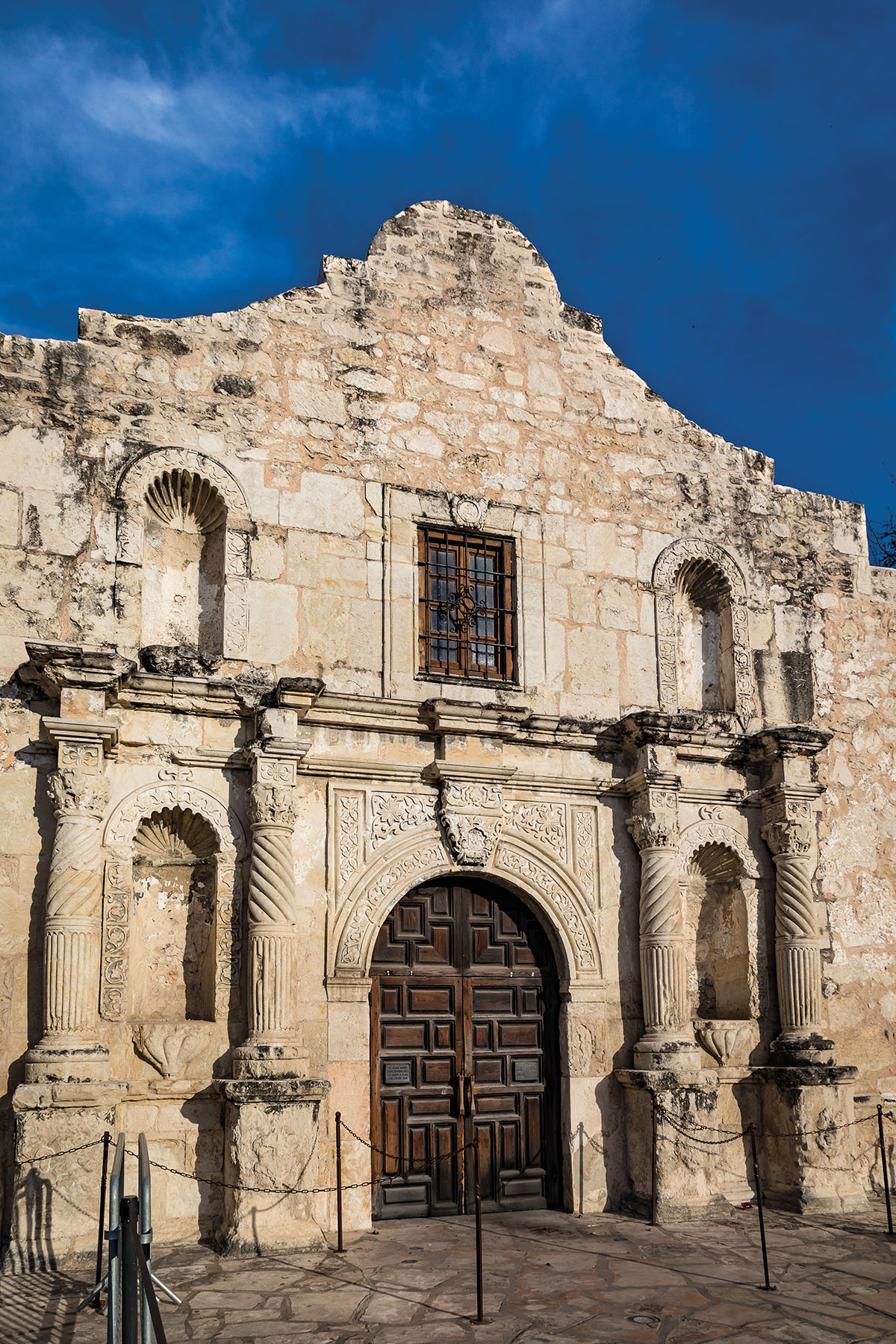
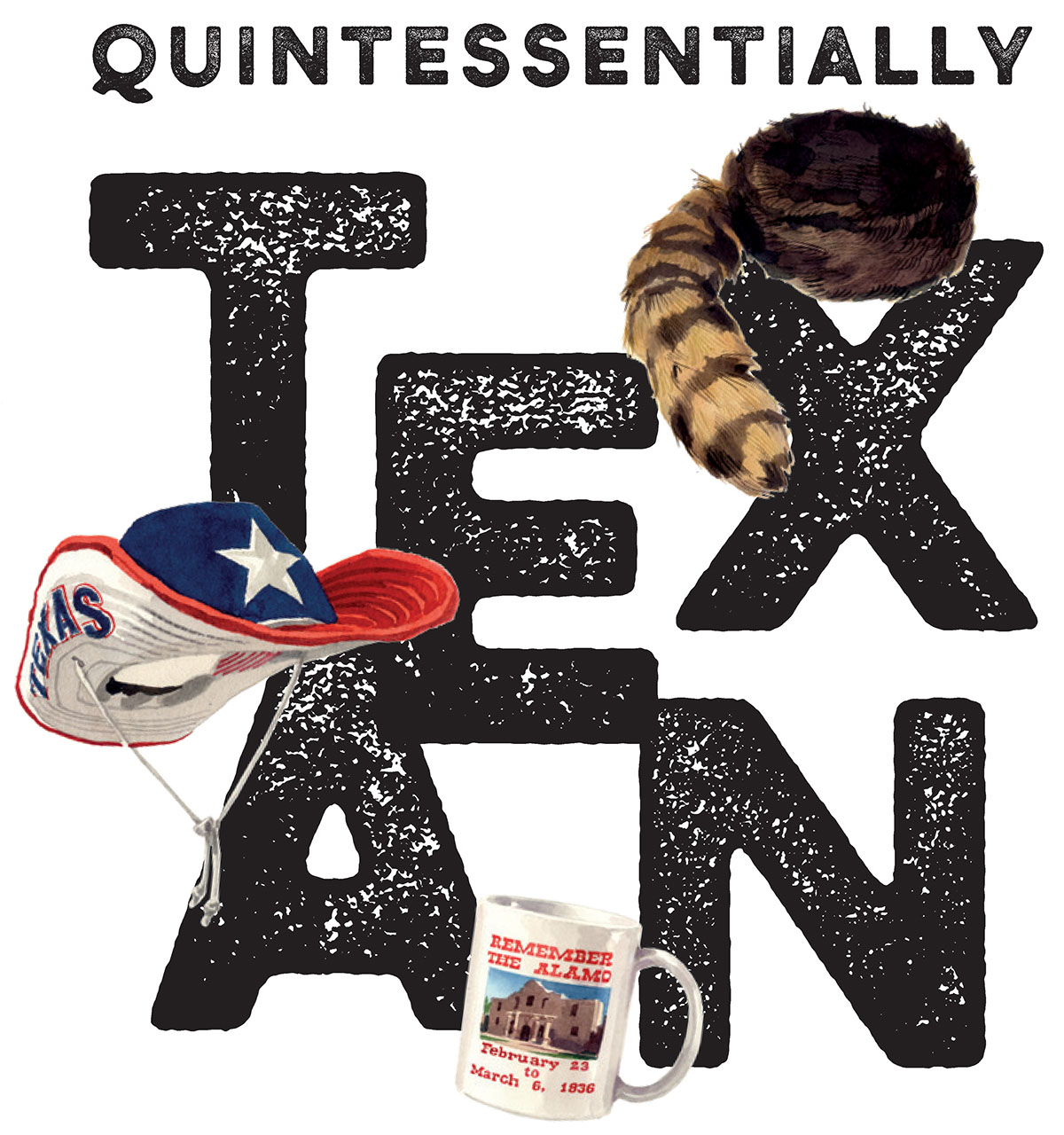
A longtime Texan searches for the soul of the state in its most legendary landmarks
By Roberto José Andrade Franco
Illustrations by Matthew Cook
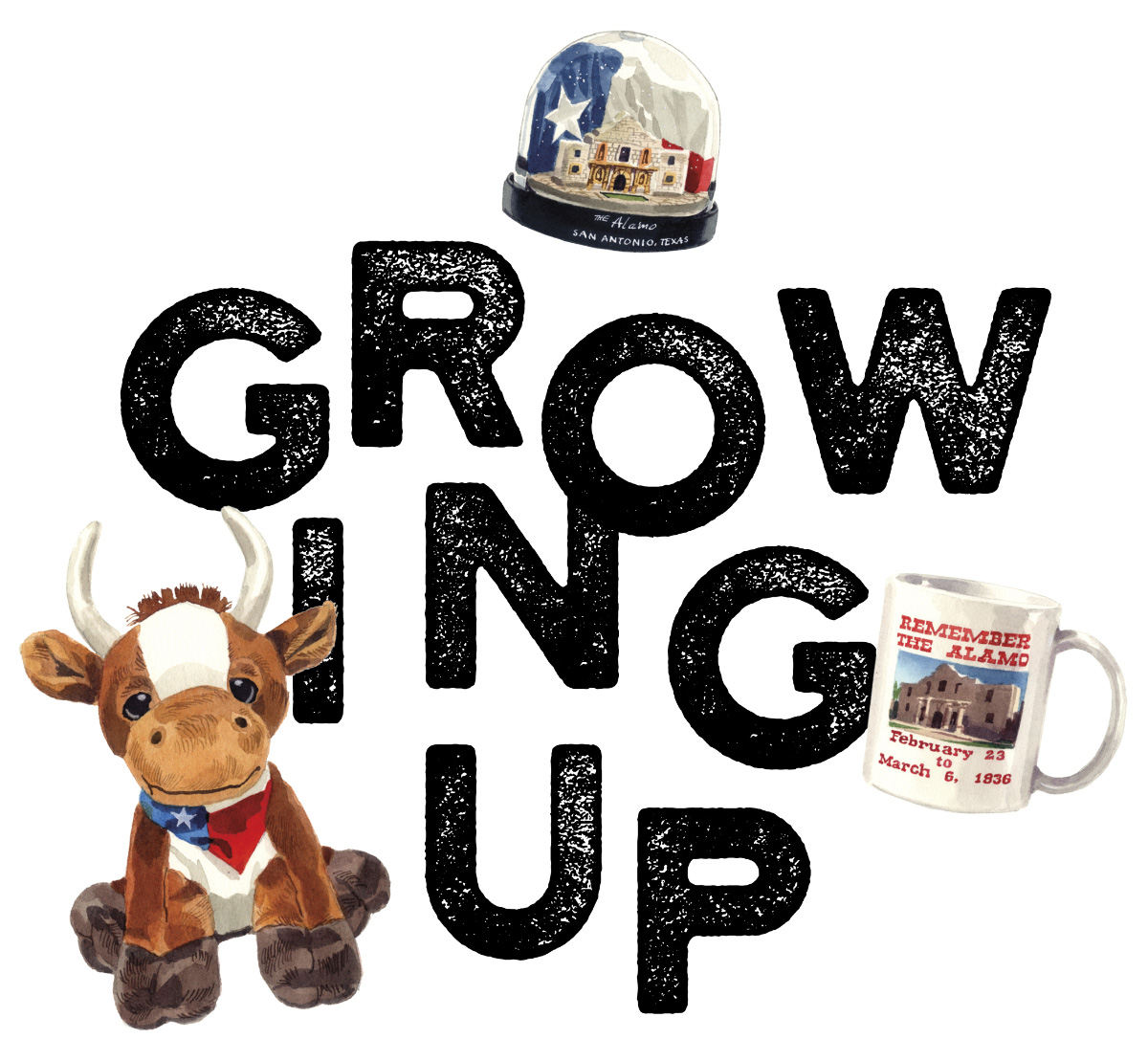
along the El Paso-Juárez border, I was a long drive from where much of the prevailing stories of Texas history took place. El Pasoans’ revolutionary heroes came from Mexico. Our cowboys were vaqueros, and our missions mainly told the history of Native Americans. Even if some of our schools were named after people who fought for Texas’ independence, those names hardly meant anything to me since I didn’t grow up hearing their well-known stories—real or mythic.
Of course, even in the westernmost corner of the state, it was almost impossible to live unaware of the Texas ideology. I knew the Alamo existed, but it was so distant from my world it might as well have been in New York. It wasn’t until I moved to Dallas in 2014 that I noticed just how much its story is ingrained in the identity of the state.
I’ve read more about Texas this year than ever before—thick tomes like Stephen Harrigan’s Big Wonderful Thing; and smaller books like Richard R. Flores’ Remembering the Alamo. Both ask weighty questions about what a place like the Alamo means. (The short answer: It depends on how our present circumstances influence our view of the past.) I read books written by Texas writers and by outsiders obsessed with the state’s legends. I read about things I had just absorbed from living here. Not even two months into 2021, I had read 11 Texas-related books. My reading inspired me to finally set out to see these foundational places with my own eyes.
First up was the Alamo, where I placed my palm on the cool stone walls that had been there before there was a Texas, before there was even a United States. Next, I visited the Fort Worth Stockyards and walked the same brick-paved roads where countless Longhorns and cowboys once strode. In El Paso, I had lived most of my life between two places, and neither one of them made me think I was “Texan.” I wanted to find out if traveling to these touchstones could change that.
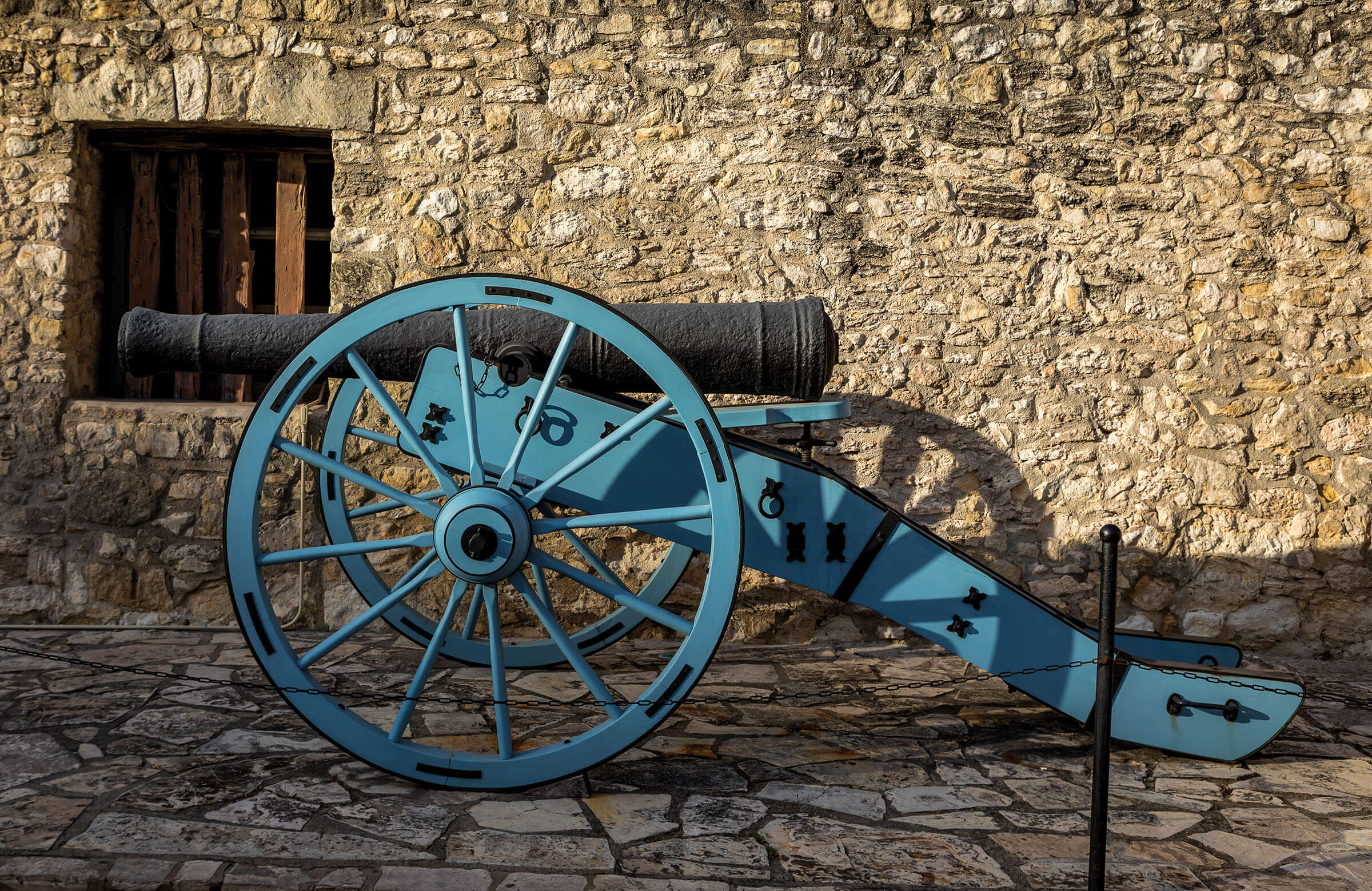
“A common misconception from visitors is the size of the Alamo,” said Michael Marino, a supervisor at the historic mission. During his tours, he often points to a map he carries while walking the sidewalks between the Alamo’s structures, statues, and trees with thick, winding limbs. Marino has worked at the Alamo for five years, his love of history nourished from his childhood in Brownsville, where he grew up “hearing stories of folklore, local leyendas [legends], and history.”
Like most first-time visitors, I also imagined the Alamo would be bigger. I’d read so much about how it casts the longest of shadows over Texas—and the world’s view of Texas. It’s a top historical tourist destination. (English musician Phil Collins owns the biggest collection of Alamo artifacts, 400 of which will be on permanent display at the Alamo starting spring 2022.) I expected the Alamo to be the size of a football stadium—the type of building seen from miles away, swallowing everything surrounding it with its presence. But the Alamo, or what remains of it, is easy to miss in part because it’s nestled between towering buildings. “Visitors are always genuinely surprised that the Alamo is at the heart of the city,” Marino continued. “They usually assume it’s outside of the city limits in the open land.”
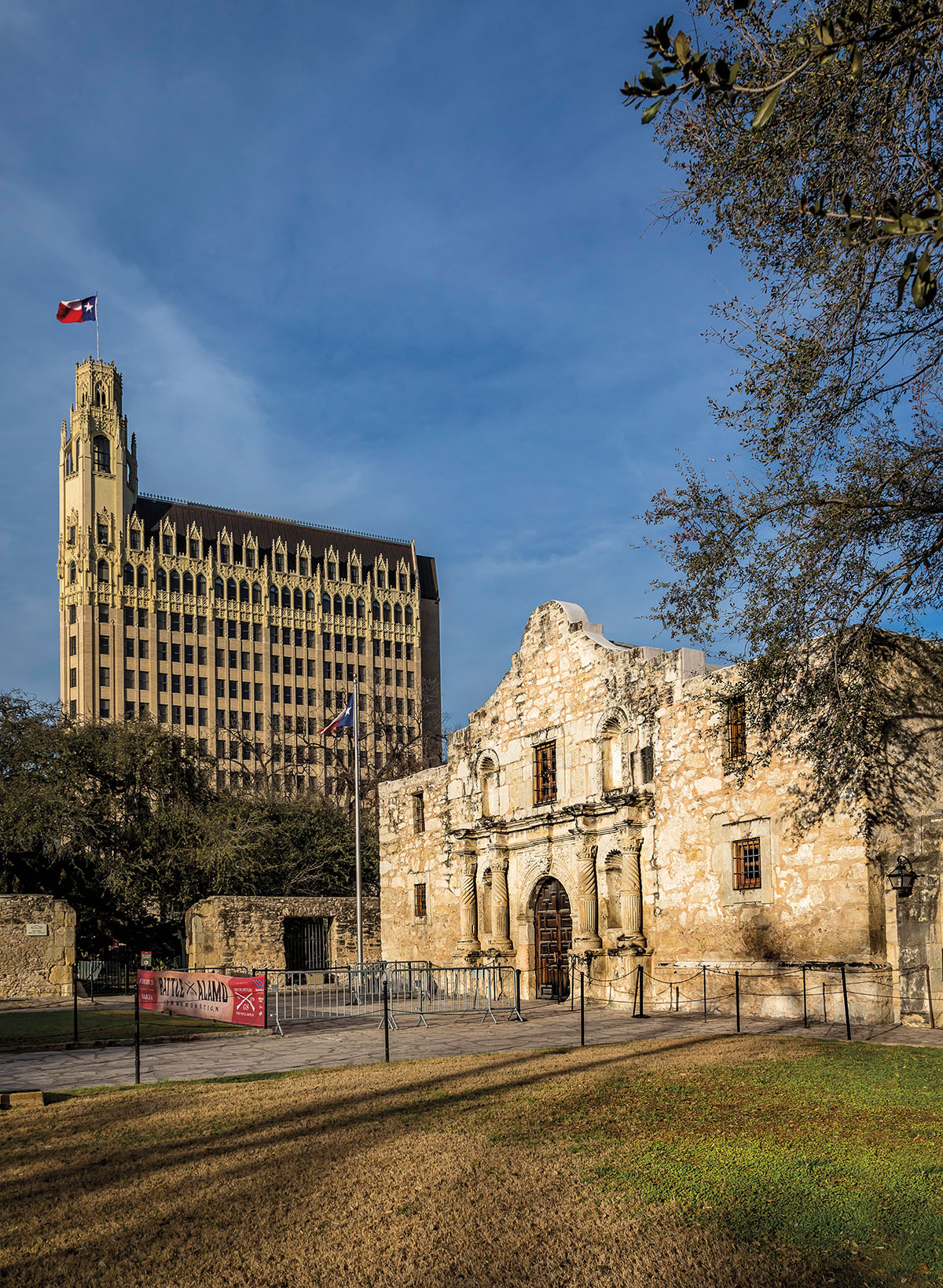
The historic Emily Morgan Hotel rises behind the Alamo. Photo by Eric W. Pohl.
I first glimpsed it the previous evening. Since I had read Lawrence Wright’s God Save Texas, where he describes the Alamo as “yellowed by the patina of age, like old teeth,” I almost expected the area to smell funny. It didn’t. The Alamo looked even smaller at night, when only its facade was illuminated by floor lights. It also looked more peaceful. Except for the stray tourist, there was hardly anyone around. With most of the downtown traffic gone, the Alamo looked especially removed from the 13-day siege that destroyed 80% of the structure.
Gone are the four walls and gate that helped guard the 4-acre fort in its days as a mission on the Texas frontier. Gone are the headquarters from where William Barrett Travis wrote his letter to the public saying the Alamo was under attack, asking for help, but also vowing to “never surrender or retreat.” That’s the same letter Gov. George W. Bush read aloud to inspire the 1999 U.S. golf team when it was losing to Europe in the Ryder Cup. Perhaps it was just a coincidence, but the U.S. team won.
When I visited again the next morning, this time venturing inside, somberness replaced the previous day’s tranquil feeling. The building most associated with the Alamo is a church, which made me feel as if I had to whisper. And the Alamo is still the site where 185 years ago, 189 people died fighting for Texas independence. No prisoners taken. All bodies burned.
“The Alamo is a site of reverence,” Marino said. “It is a symbol of the Texas spirit.” Foreign visitors have told him about their country’s last-stand battles, which, like the Alamo, have become mythologized in forming part of their national identity. These stories are easy to inherit, difficult to untangle. In Texas, they’ve become part of the landscape.
A short walk from the Alamo’s long barrack, the Alamo Cenotaph stands 50 feet high and is made of pink Texas granite and gray Georgia marble. Travis, James Bowie, Davy Crockett, and James Bonham—those figures whom I’d always heard of but until recently didn’t fully appreciate—stand out from the rest. While the monument includes other figures, these four are larger and their names are listed above each of their heads, unlike the rest that are etched around the base. In recent years, the monument became a point of contention. As part of the Alamo Plaza’s makeover, a proposal to move the monument a few hundred feet south aroused anger from some history buffs. The various reasons included believing the cenotaph is located where the Texas revolutionaries are buried, which Marino called “a long-standing myth.”
People gathered to protest the proposal. One woman arrived on horseback. A few people spoke with their voices full of emotion. And some—because the chapel and barrack that were once Spanish, then Mexican, are today as Texan as cowboys and Longhorns—equated their fight with the original defenders of the Alamo. The protest worked, and the monument stayed put.
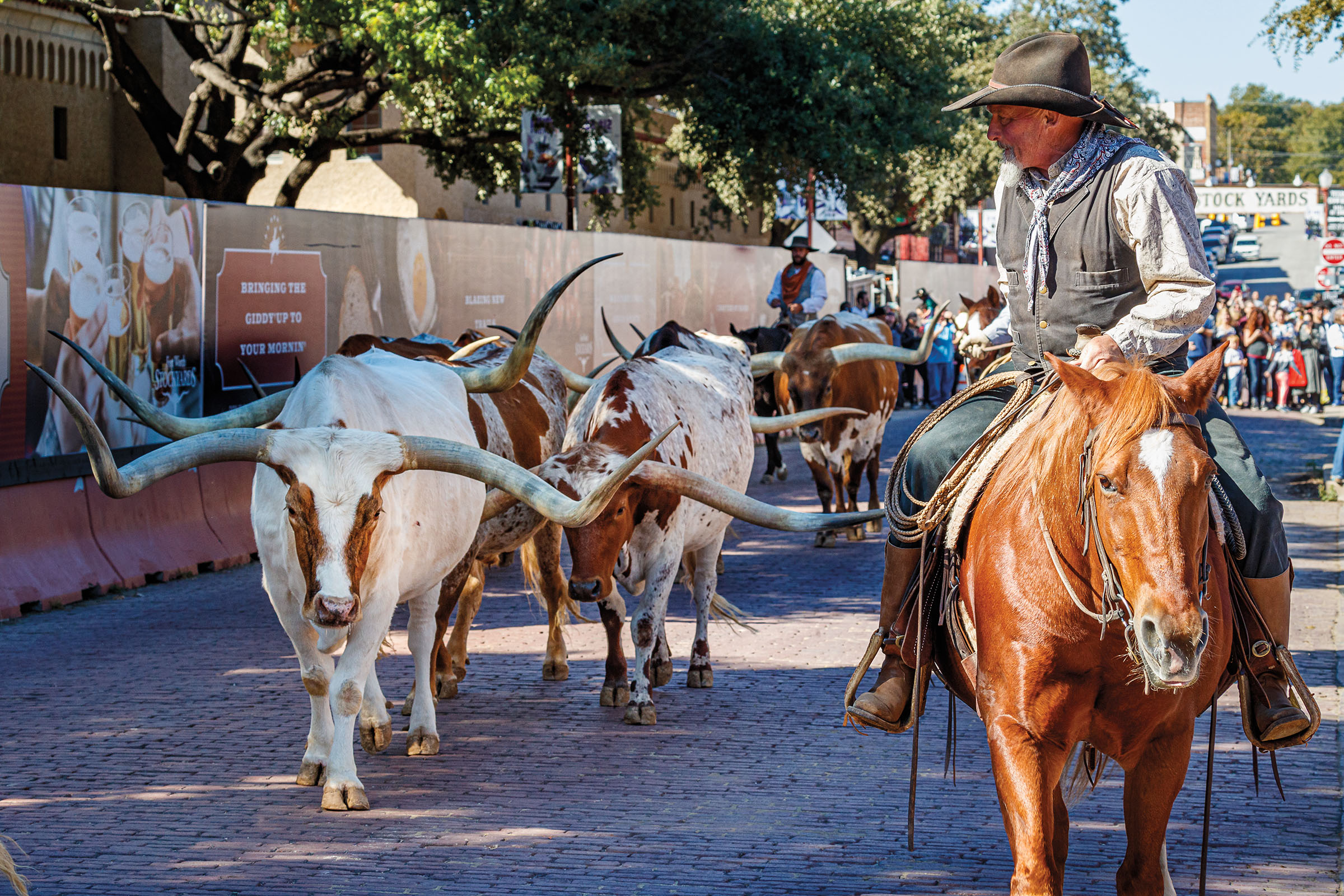
My family moved away from Texas in the mid-1980s, when it became clear that my father’s job as a mechanic wouldn’t provide enough to sustain our family. My father joined the United States Army, and after that we were always on the move until we returned to El Paso in time for me to attend high school. We lived in places like Colorado and Chicago, and even farther away from Texas, in Germany. One academic year, I attended four different schools on military bases.
On my first day of school in the middle of the semester, teachers told me to introduce myself to the class. I said something like, “My name is Roberto, and I’m from El Paso, Texas.” As soon as I said “Texas,” I knew what was coming next. Questions from classmates, sometimes even the teacher, asking if I rode horses, owned cows, or dressed like a cowboy. More than once, someone shouted the slogan of the state’s anti-littering campaign: Don’t mess with Texas!
I grew tired of telling my classmates I’d never even stood close to a cow, much less a Longhorn, which is what I envisioned when people talked about the beast synonymous with Texas. Until then, the only Longhorns I’d ever seen were the ones that played football on TV.
“Some people in other countries, they think we still wear six-shooters on our hips—and some people do—or that we ride our horses to work,” said Teresa Burleson, an award-winning cowgirl poet and director of the Stockyards Museum inside Fort Worth’s Livestock Exchange Building. In the early 1900s when Fort Worth was one of the country’s major centers of the livestock industry—along with Chicago, St. Louis, Omaha, and Kansas City—the building was known as the “Wall Street of the West.”
Twice a day, every day—save for a few holidays—a cattle drive proceeds in front of the Livestock Exchange. Along with a few dozen spectators, I stood there one sunny Wednesday afternoon as I watched 16 Longhorns, each representing a decade of the city’s history, saunter down the street, with cowboys on horseback at the front, middle, and rear of the parade. The smell of live cattle overpowered that of cooked ones coming from a nearby steakhouse. The marching Longhorns were calm but intimidating with their long, twisted horns that seemed to point in every direction. They were so close, I could see their saliva dripping, a string falling every few feet they walked. Standing in such close proximity to what J. Frank Dobie in The Longhorns called, “the peer of bison or grizzly bear,” I couldn’t help but think of the damage they’d cause if even one went off course.
“People don’t realize how big they are until they see them in person,” Burleson said. The average Longhorn at the Stockyards weighs 1,500 pounds. The biggest one, 700 pounds heavier. Longhorns are genetic descendants of the first cattle brought by Christopher Columbus, and they originally lived largely in the wild. But once the cattle industry flourished, Longhorns helped make Fort Worth what Burleson called the “Texas-most city” since “it represents what people believe Texas to be.”
Out of that same industry came cowboys—Mexican vaqueros originally—who held riding and roping competitions that eventually became rodeos. Longhorns, which look as big in person as the Alamo looks small, are the nucleus from which the Texas mythos developed. Both still define what represents Texas to those who live here and those who’ve never stepped foot in the state.
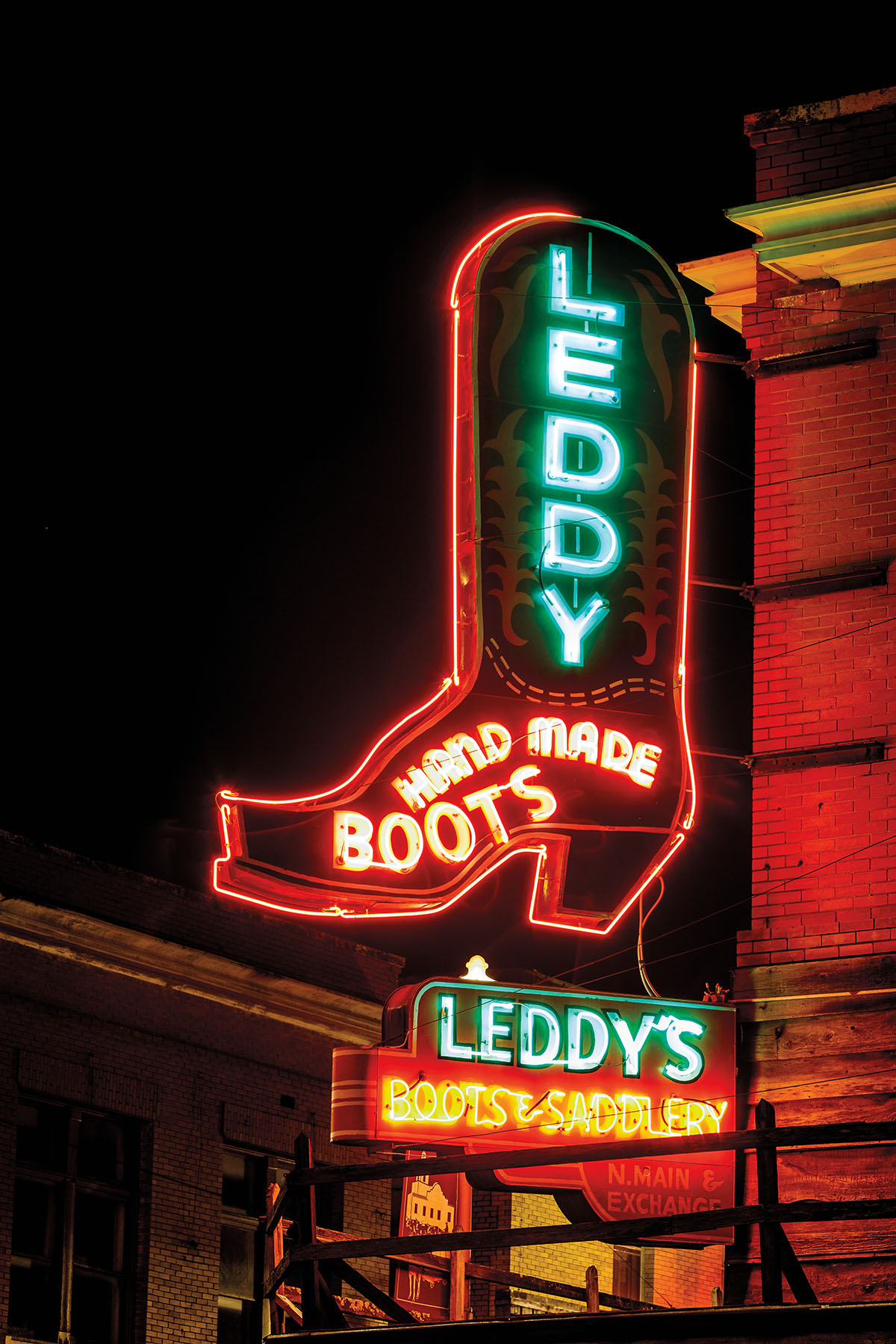
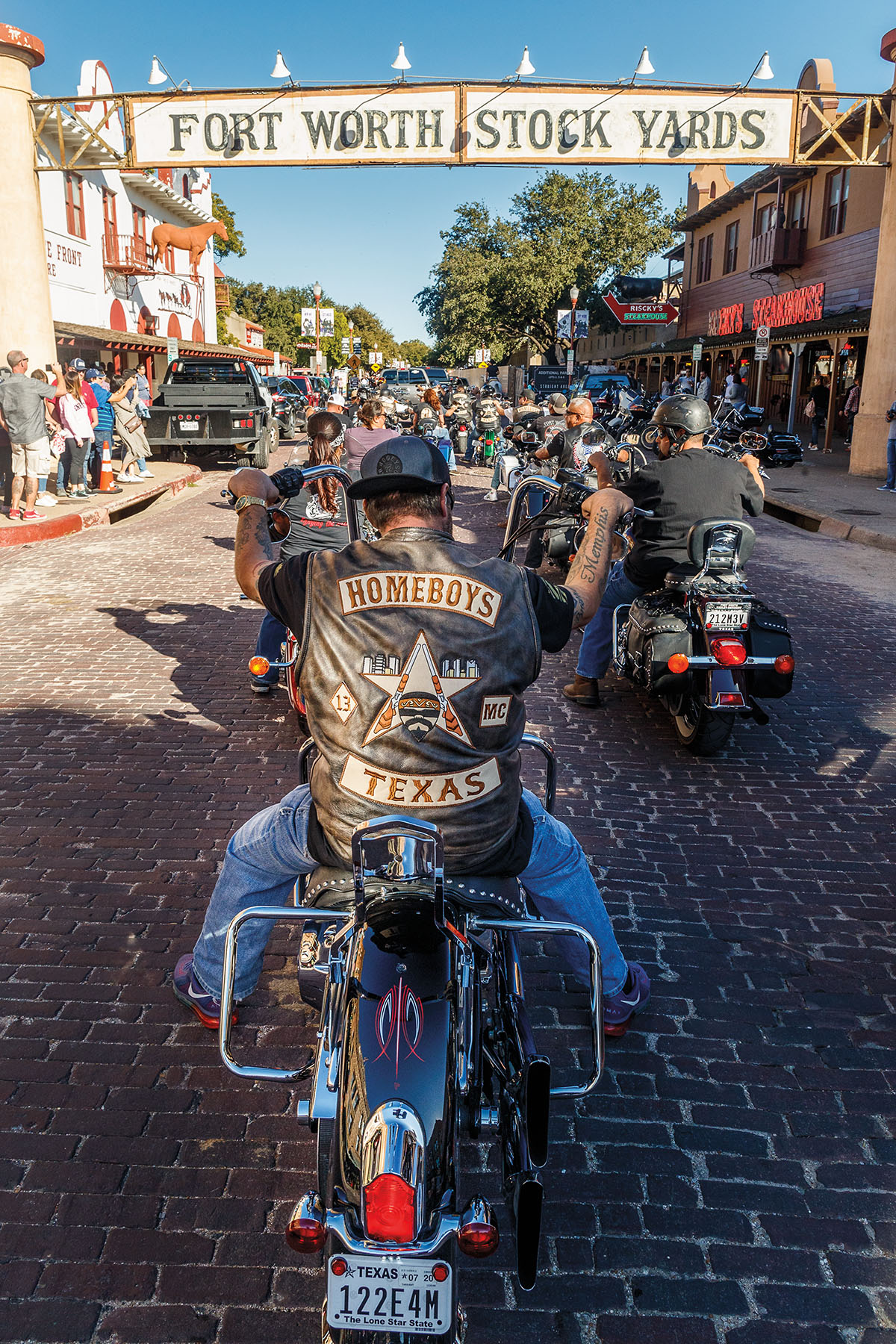
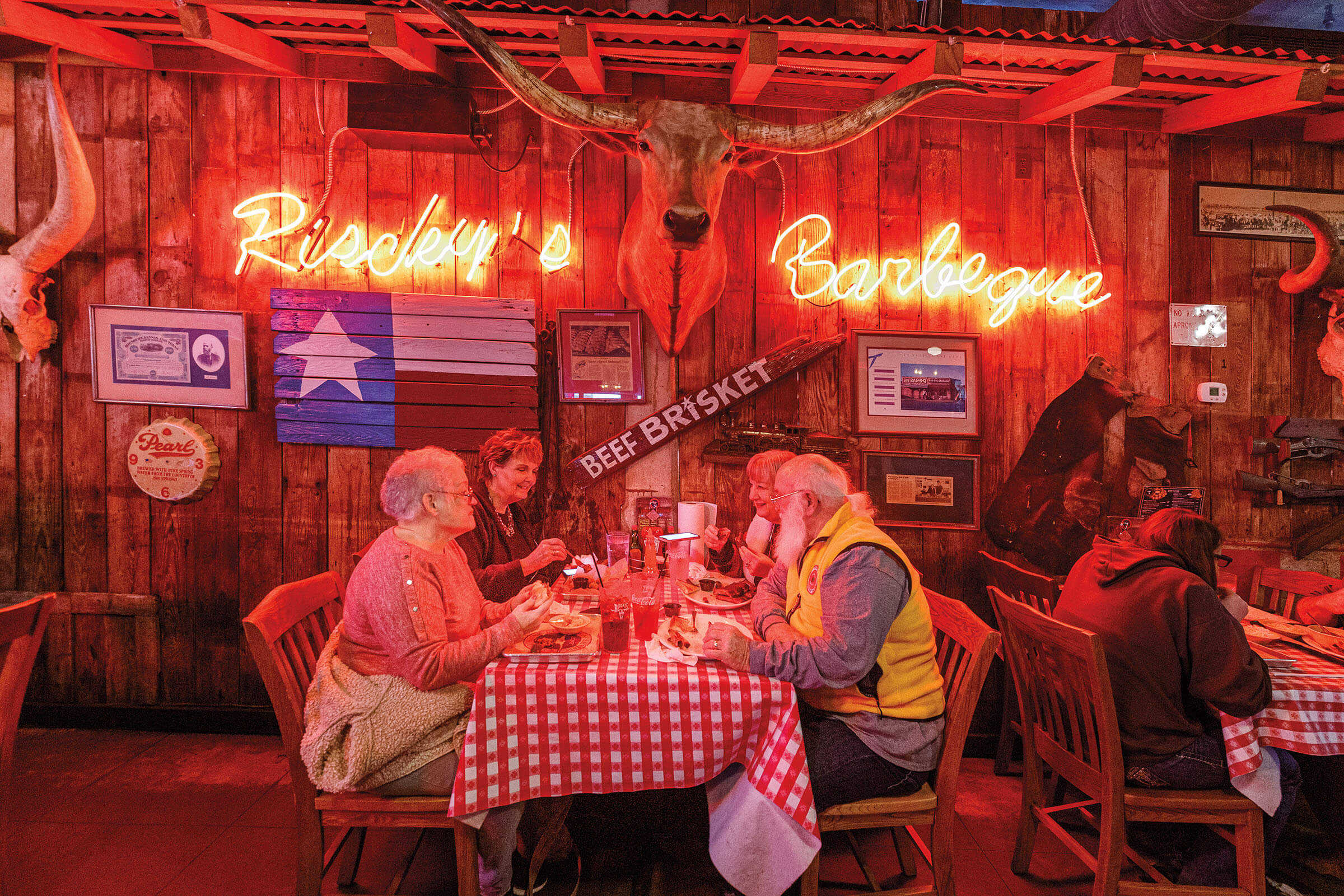
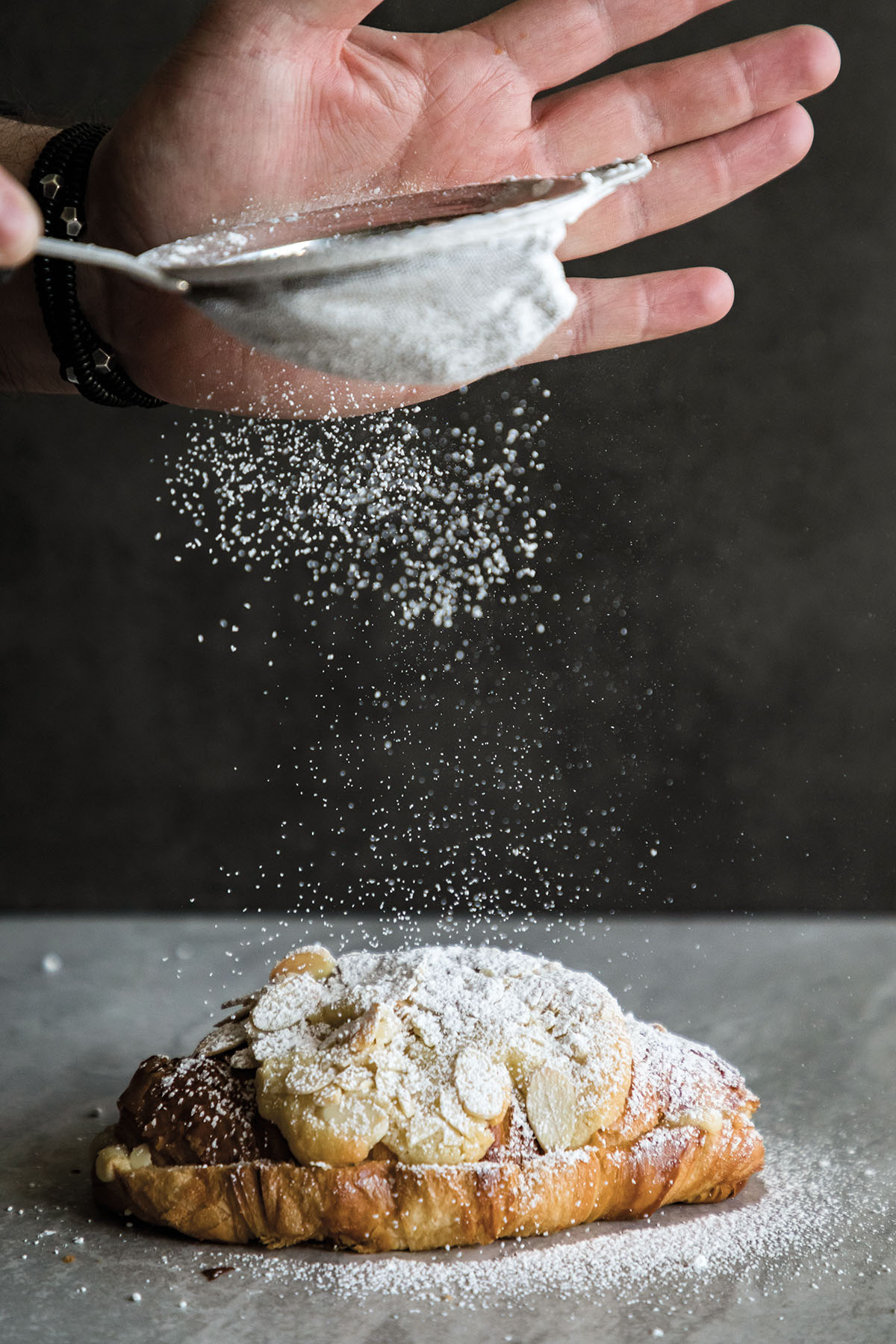
The tequila almond croissant at La Panadería in San Antonio. Photo by Eric W. Pohl.
At both of these iconic sites, there’s a juxtaposition between the past and present. It’s physical, like seeing the sign for an Imax movie theater peering over the back walls of the Alamo. Or, like watching Longhorns and cowboys on horseback next to a black 2020 Jeep Compass, or seeing the Livestock Exchange Building alongside the recently built Hotel Drover whose façade is designed to look like it’s been there since the early 1900s too.
It’s also metaphysical. It’s the spirit, for better or worse, that makes Texas unlike any other place in the country—or world. It’s why Bush read Travis’ letter to a team of golfers and why protestors carried “Remember the Alamo” signs while standing in front of the cenotaph. It’s the fact that despite my knowing the cattle drive is more honorary than anything else, I still wanted to see the famed animals close-up. It’s understanding why the Alamo, despite its underwhelming size and its complicated history, looms large in our collective imagination. It’s the way I’ve become increasingly obsessed with the state I live in, even if I don’t always feel like a Texan.
Fort Worth evolved from its stockyards in the same way San Antonio grew its city around the Alamo’s remains. Texans took that destroyed fort and turned tragic loss into a righteous birth. Out of that came history and myth to help cover the uncomfortable truths, and leyendas and folklore that give everyday things their potency. All of these symbols and historic landmarks create a Texan identity so distinct that even elementary school children thousands of miles away recognize it instantly.
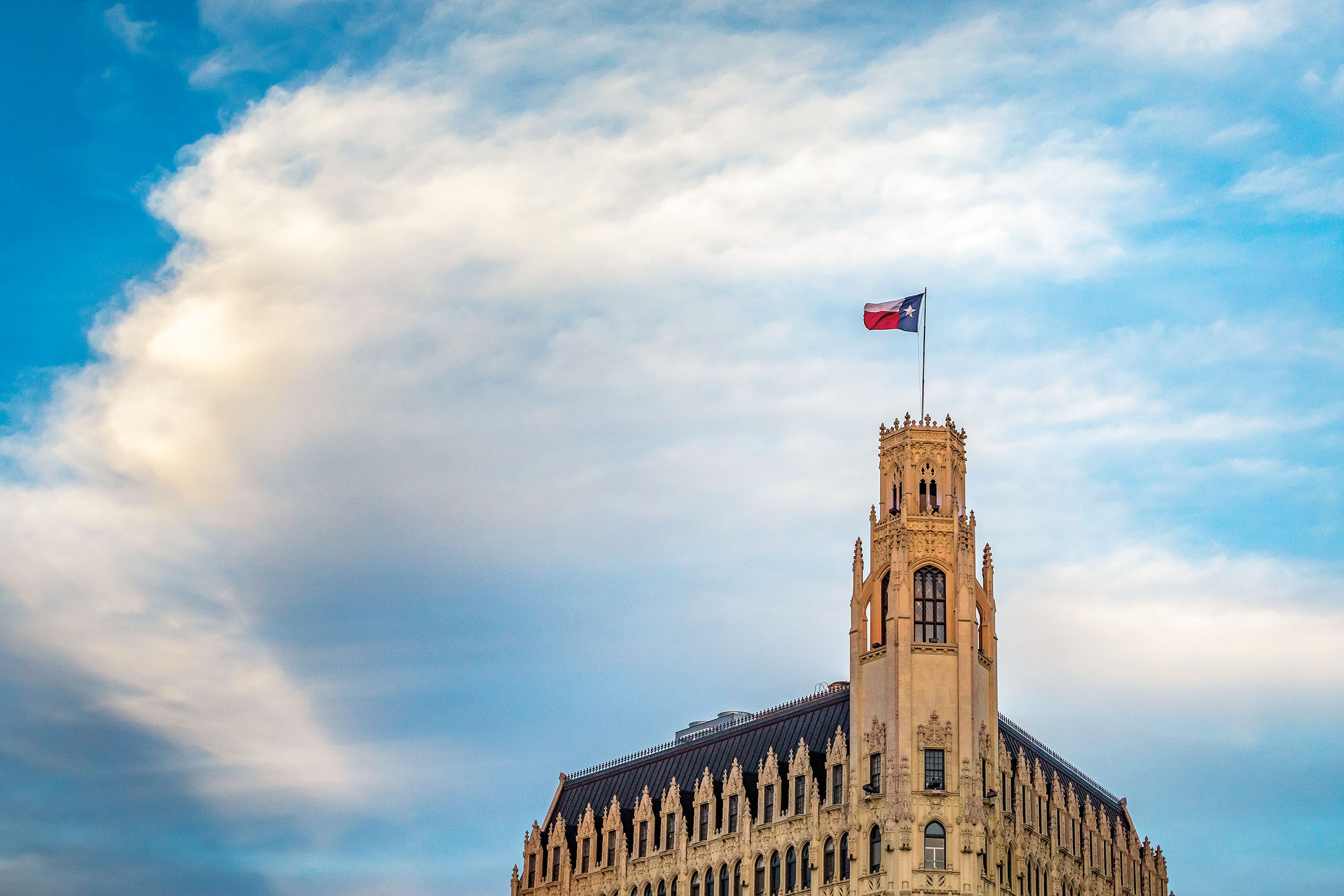
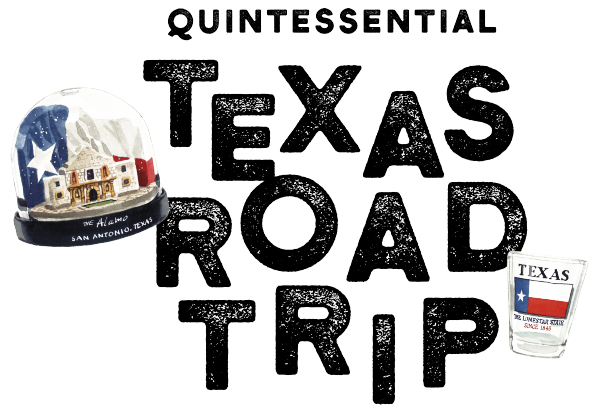
Where to stay in San Antonio: Named after the woman who supposedly distracted Mexican General Antonio López de Santa Anna during the decisive battle for Texas independence, the Emily Morgan Hotel is a minute’s walk from the Alamo. Originally a Medical Arts Building, the hotel’s ornaments include gargoyles depicting medical afflictions. The Emily Morgan Hotel, 705 E. Houston St., San Antonio. 210-225-5100; emilymorganhotel.com
Where to eat in San Antonio: A four-minute walk from the Alamo, La Panadería specializes in pan dulce influenced by techniques used in French, Italian, and American breadmaking. The tequila almond croissant is a must try. For the lunchtime crowd, the café also offers salads and tortas. La Panadería, 301 E. Houston St., San Antonio. 210-592-6264; lapanaderia.com
Where to stay at the Stockyards: Open since 1907, the Stockyards Hotel, with its Old West theme, has hosted many legends from country-western music, including Willie Nelson and Trisha Yearwood. You can even book the room Bonnie and Clyde rented in 1933, complete with photographs and newspaper clippings of the infamous Texas outlaw couple. Stockyards Hotel, 109 E. Exchange Ave., Fort Worth. 817-625-6427; stockyardshotel.com
Where to eat at the Stockyards: Riscky’s Barbeque has served its slow-smoked, hand-rubbed-with-“Riscky Dust” ribs, brisket, sausage, chicken, and other favorites for over 90 years. You can enjoy Riscky’s Barbeque, located at the start of the cattle drive, while being surrounded by the most historic parts of the city. Riscky’s Barbeque, 140 E. Exchange Ave., Fort Worth. 817-626-7777; risckys.com



